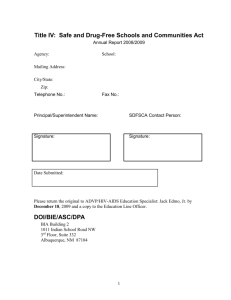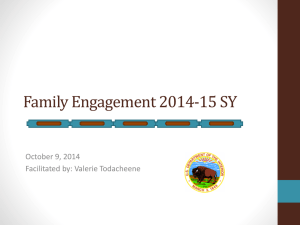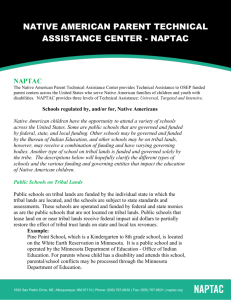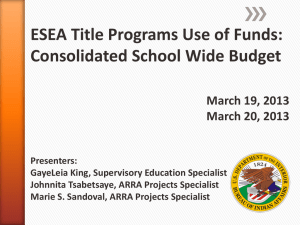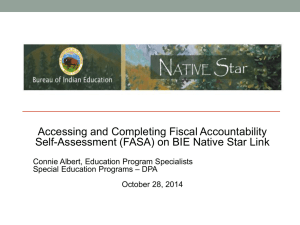2014 March NIEA BIE Letter
advertisement
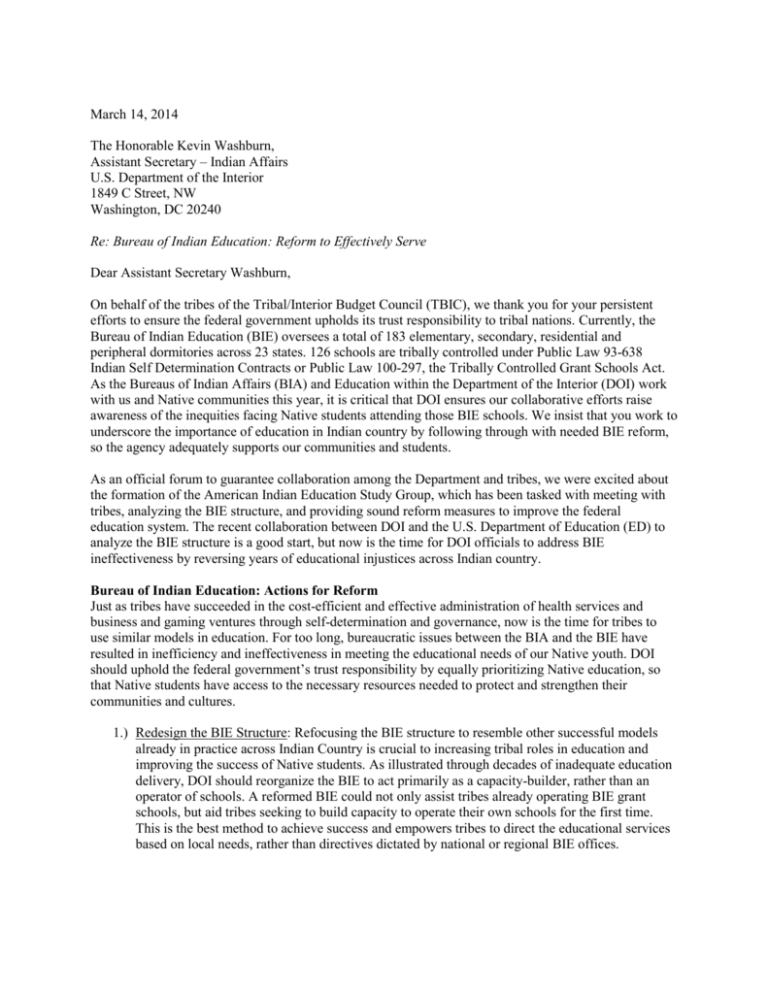
March 14, 2014 The Honorable Kevin Washburn, Assistant Secretary – Indian Affairs U.S. Department of the Interior 1849 C Street, NW Washington, DC 20240 Re: Bureau of Indian Education: Reform to Effectively Serve Dear Assistant Secretary Washburn, On behalf of the tribes of the Tribal/Interior Budget Council (TBIC), we thank you for your persistent efforts to ensure the federal government upholds its trust responsibility to tribal nations. Currently, the Bureau of Indian Education (BIE) oversees a total of 183 elementary, secondary, residential and peripheral dormitories across 23 states. 126 schools are tribally controlled under Public Law 93-638 Indian Self Determination Contracts or Public Law 100-297, the Tribally Controlled Grant Schools Act. As the Bureaus of Indian Affairs (BIA) and Education within the Department of the Interior (DOI) work with us and Native communities this year, it is critical that DOI ensures our collaborative efforts raise awareness of the inequities facing Native students attending those BIE schools. We insist that you work to underscore the importance of education in Indian country by following through with needed BIE reform, so the agency adequately supports our communities and students. As an official forum to guarantee collaboration among the Department and tribes, we were excited about the formation of the American Indian Education Study Group, which has been tasked with meeting with tribes, analyzing the BIE structure, and providing sound reform measures to improve the federal education system. The recent collaboration between DOI and the U.S. Department of Education (ED) to analyze the BIE structure is a good start, but now is the time for DOI officials to address BIE ineffectiveness by reversing years of educational injustices across Indian country. Bureau of Indian Education: Actions for Reform Just as tribes have succeeded in the cost-efficient and effective administration of health services and business and gaming ventures through self-determination and governance, now is the time for tribes to use similar models in education. For too long, bureaucratic issues between the BIA and the BIE have resulted in inefficiency and ineffectiveness in meeting the educational needs of our Native youth. DOI should uphold the federal government’s trust responsibility by equally prioritizing Native education, so that Native students have access to the necessary resources needed to protect and strengthen their communities and cultures. 1.) Redesign the BIE Structure: Refocusing the BIE structure to resemble other successful models already in practice across Indian Country is crucial to increasing tribal roles in education and improving the success of Native students. As illustrated through decades of inadequate education delivery, DOI should reorganize the BIE to act primarily as a capacity-builder, rather than an operator of schools. A reformed BIE could not only assist tribes already operating BIE grant schools, but aid tribes seeking to build capacity to operate their own schools for the first time. This is the best method to achieve success and empowers tribes to direct the educational services based on local needs, rather than directives dictated by national or regional BIE offices. 2.) Institutional Support for BIE: As the only population for which the federal government has an explicit obligation to educate, federal officials should equally prioritize BIE reform and seriously address the needed systemic changes and issues highlighted in the September 2013 Government Accountability Office Report on the BIE. Much work must be accomplished before the BIE has the internal ability to serve tribes as a capacity builder. Due to its fragmented institutional and budget structures as well as the often-competing directives of the BIA, the BIE is currently incapable of substantial reform. DOI should provide the BIE the necessary tools, resources, and personnel to affect institutional change internally, so that the BIE can produce results externally as it assists tribes who desire to operate their own schools. As the BIE is redesigned, the agency would help tribes recruit, hire, and develop effective teachers and leaders, and promote teacher and school accountability. Such technical assistance support from the BIE would include innovative recruitment and outreach, professional development, collaborative practice, coaching, career tracks, certification and selection requirements, and sustained support through classroom visits from the BIE. This would lead to schools that adequately prepare their students for college and careers by addressing priority needs, such as family engagement and teacher recruitment in rural areas. Flexibility in resource allocation would allow the BIE to be a provider of quality professional development in the areas of family engagement, curriculum and assessment preparation, and integration of language and culture. 3.) BIE Budget Equality: The BIE should be provided the same opportunities as the BIA. DOI needs to transfer budget authority from the BIA to the BIE to increase efficiency and effectiveness, as BIE officials better understand educational budget allocations and programmatic needs. Providing BIE with greater control over its own budget development and execution would create better response to changing circumstances and create the ability to meet tribal needs on a case-by-case basis as tribes incur educational management challenges and require technical assistance. The BIE must also be redesigned to incentivize and strengthen partnerships with tribes and Native education organizations who can help fulfill its mission. With limited budgets within federal and tribal governments, collaboration is increasingly important to BIE in fulfilling its trust responsibility to Native communities. Only by strengthening the ability for tribes to work with the BIE and, in turn, have the BIE support tribes as they develop capacity, will outcomes improve and the achievement gap between Native and non-Native students narrow. Conclusion Tribes and Native communities place great emphasis on the education of their students and it is long overdue that DOI equally prioritizes Native education and Bureau of Indian Education reform. On behalf of the tribes of TIBC, we appreciate your continued efforts but insist that you now push to empower the BIE to support tribal capacity in education as well as provide equitable resources and budget authority to the BIE. We challenge the Department of the Interior to build on recent rhetoric and collaborate with Native communities to create actual results within the BIE. Native students are our future. Without our students, tribes and Native communities will lose a generation of leaders who are critical for protecting tribal sovereignty, culture, and tribal nation building. Sincerely, 2
